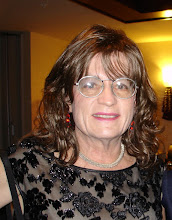 |
| An unnamed meadow |
 |
| A fifty-year-old blaze on a tree to mark the trail |
The trail was easy up to Little Castle Lake. Then it petered out. I figured it would, since the website said I’d probably get lost. “Find the old blazes chopped into the bark of trees fifty years ago,” it says. My topo map shows the trail, and with compass and matching terrain to contours on the map, I was doing just fine I thought. Only a few false turns, soon corrected.
Past a little unnamed lake, and while crossing an unnamed
meadow, it struck me. Why is this meadow
unholy, or at least not recognized for spiritual richness, and Panther Meadow
is? Both meadows have fine views of Mt.
Shasta. Both have grass and wildflowers,
though here in this lovely meadow, at elevation 5,400 feet, the grass and
flowers are thriving sooner than at 7,400-foot Panther Meadow. The well-known Panther is on the slope of Mt.
Shasta, while this one is across the Sacramento River Valley, in another range
of mountains—the Klamath. Yet the great
Mt. Shasta stands majestic above this meadow, just as it does above Panther.
 Can it be that status in holy places arises on the basis of
hearsay more than those intrinsic spiritual qualities touted as reasons for designating
a place sacred? Are legends and notions
of holy ground somewhat like websites gone viral, where word spreads of wonders
that only a few have seen, and if you simply go there, you too can become
enlightened?
Can it be that status in holy places arises on the basis of
hearsay more than those intrinsic spiritual qualities touted as reasons for designating
a place sacred? Are legends and notions
of holy ground somewhat like websites gone viral, where word spreads of wonders
that only a few have seen, and if you simply go there, you too can become
enlightened?
unrecognized
I find no connection
between the esteemed
and the good





"Are legends and notions of holy ground somewhat like websites gone viral, where word spreads of wonders that only a few have seen, and if you simply go there, you too can become enlightened?"
ReplyDeleteYes I believe so. In fact, your question has triggered an entire sequence of thoughts which I may even have to blog about. I love a good question. I believe "experiences" permeate locations and if someone is sensitive enough, perhaps they might pick up on this. Whether it lead to a holy experience or simply a feeling of lightness and beauty is not easy to say but I suspect that these areas become holy much as Mt. Sinai is holy or Jerusalem for all its conflicts invites a reverence to its visitors.
And perhaps because a poet finds it holy, it is so.
I want to see that blog. I want to comment. But on what? Remember when Moses saw a bush burning and it was not consumed, and a voice came out of the burning bush saying, “Take off your sandals for the place where you stand is holy ground.” That ground became holy suddenly, without hearsay or any website gone viral. Moses obeyed, and shook, and was never the same. It’s the only way holy ground arrives to us from ordinary dirt. Passionate, unadulterated superior knowledge. Not by hype, accumulation of opinion, or belief beyond belief. Moses never forgot, never went back, and stumbled a lot of times. But look what he did! Go for it, Lois, straighten out the fanatics!
DeleteFor me, in every meadow, every place in every ordinary thing-- every fullness of life IS, and what makes it different is the mood and receptivity of the person viewing. Openness is the difference. The most amazing feelings result from simply being open in the moment, and the names, the way of describing that, depends on your vocabulary, culture and experience. At least that's my view...
ReplyDeleteThat, Kathabela, is because you derive “fullness of life” for yourself, finding and making it from all the observations and experiences you find along the way, whereas the worshippers and meditators at Panther Meadow, I fear, seek after something others claim to have found, and they try hard to follow in The Way (one of many ways). It’s a subtle or non-existent difference for most people, but I think it’s an important one.
Delete